As one of great masters in Chinese art during the 20th century, following the liberation in 1949 Wang Shikuo is generally considered as a founder of Chinese art. This centennial exhibition of Wang Shikuo opened at the Art Museum of Central Academy of Fine Arts, Beijing on 6th May. A special award ceremony was held at its’ conference for Wang’s family which endowed the Art Museum of Central Academy of Fine Arts with 172 pieces of works.

President of CAFA Made his Speech at the Ceremony; Photography by Taylor Wong
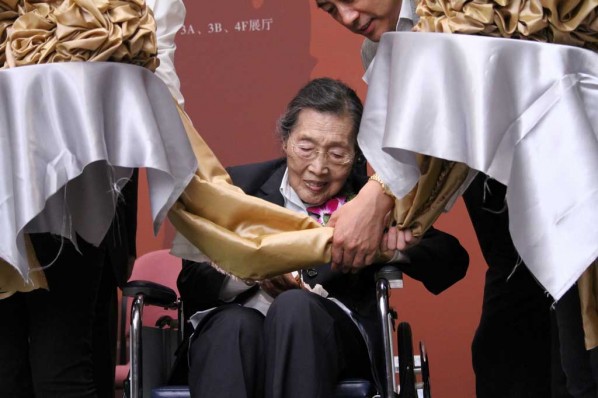
Wang Shikuo's Wife at the Ceremony; Photography by Taylor Wong
Taking “From Yan’an to Beijing” as its thread, and time as its clue, the exhibition is divided into four sections: the first part, Light is Ahead—Head for Yan’an; secondly, Passionate Years—at Yan'an; thirdly, Sons of the Earth—New life in New China; fourthly, Lofty Aspirations Unrealized—the 1970s. From these, the third section has been divided into seven units, namely: the Centenary Work—“Bloody Clothes”, National Spirit – Creations on Revolutionary Historical themes, Epochal New Songs—Labor and Construction, the Vast and the Subtle—Teaching Practice, Learning from both East and West—Chronicle of Traveling in Europe, Clear Lake and Distant Mountains— Landscapes and Paintings from life, the Utter Innocence— Life and Family. Such a systematic and clear organized presentation makes it possible for us to review the whole of Wang Shikuo’s art career. Now it is like combing and researching Chinese art history in the mid-twentieth century. Anyone who studies the art of this period could not avoid Mr. Wang’s artistic achievement and educational ideology.
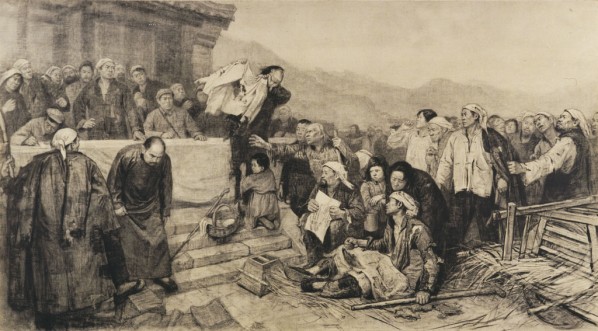
Bloody Clothes by Wang Shikuo; Sketch, 1959; Collected by National Museum of China
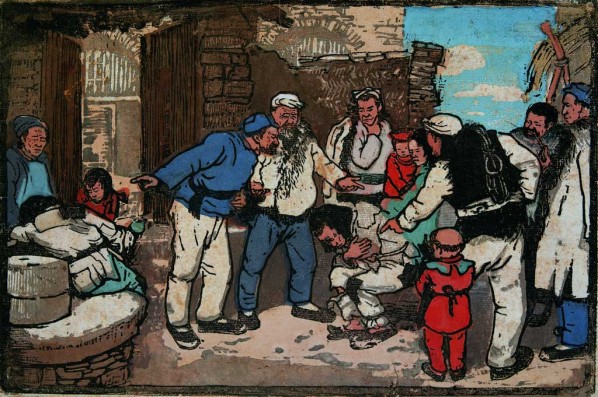
Transformation of Loafer by Wang Shikuo; Print, 1947
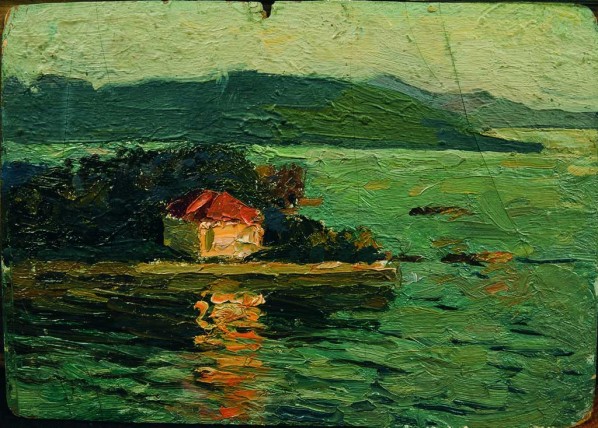
Xiaoji Mountain at Taihu Lake by Wang Shikuo
Wang Shikuo (1911-1973) was born in the county of Ye in Shandong Province, China. With a deep love of art from childhood, he specialized in oil painting in the Peking Institute of Fine Arts, then Hangzhou Art College, then the Shanghai Art Professional School. He went to Japan in 1935 and studied at the Tokyo School of Fine Arts. When the Second World War broke out, Wang decided to return to China and participated in the national salvation and fought against the Japanese, and then he left Wuhan for Yan’an. Later he taught in the Lu Xun Academy of Fine Arts, University of the North, Northern China University and for a long time at the Central Academy of Fine Arts. Wang Shikuo devoted his life to art and art education and his students are spread all over the world. He is one of the most prominent and famous painters and art educators from China's socialist period.
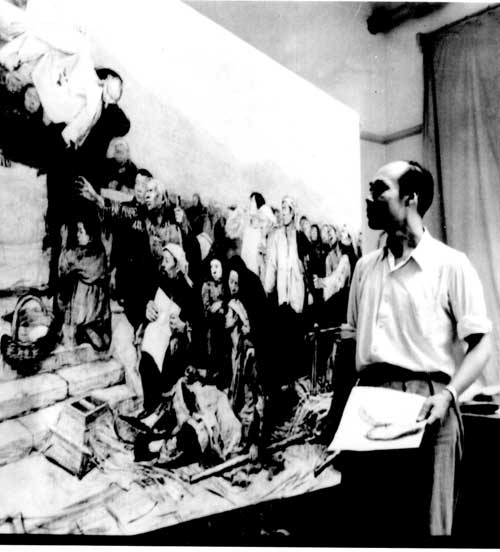
Wang Shikuo During His Creation of Bloody Clothes
Wang Shikuo is the most important realistic painter in the Chinese history of the 20th century. His works such as “Transformation of Loafer”, “Bloody Clothes”, “Joining Forces at Jinggang Mountain”, “Join the Army,” and so on are among the classics of modern Chinese art history which have exerted important historical influences. As his representative large scale work, “Bloody Clothes” embodies his artistic ideas and creative methods to become a successful model of revolutionary realism art from1949, and its form of sketch and its profound theme make it unparalleled in the history of art. The creative way "in-depth life - painting materials - sketches - canvas creation" are developed in the creation of the “Bloody Clothes” have had a far-reaching impact on the theme of new creations and the Chinese Institute of Education since the founding of the People’s Republic of China. It’s a great pity that “Bloody Clothes” could not be presented at this exhibition since the National Museum of China announced it’s being repaired now and not completed yet then they could not lend it to the Art Museum of Central Academy of Fine Arts.
View the Chinese version of this article here




























